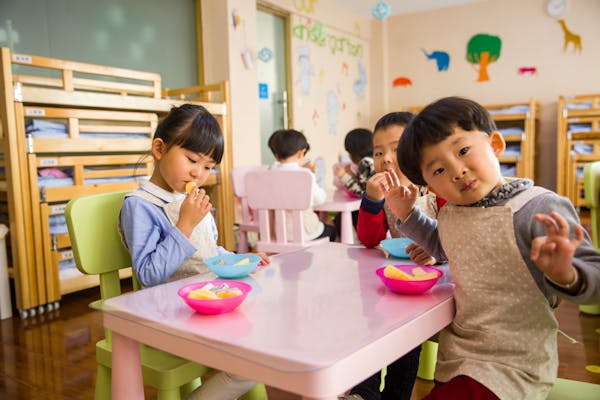In a world where change is the only constant, one thing remains certain: the classroom will continue to change. Whether adapting to new technologies or simply keeping up with the student’s needs, the right furniture can help them evolve. In such instances, professionals designing workspaces and furniture sets have an excellent understanding of classroom design. They use their industry experience and listen to the demands of the clients to cater to all requirements. Thus, this article will probe some points to consider when opting for such designs in today’s scenario.
Flexible Seating
- Flexible seating is a great way to create a collaborative learning environment.
- Flexibility in terms of moving around provides a platform for students to engage with different spaces. For instance, students can move around the classroom freely and change their seating arrangement depending on their assignment.
- This activity encourages collaboration and gives teachers more opportunities for focused instruction. They can target a specific student based on the assignment and enhance performance.
- Flexible seating is also cost-effective because it allows the administration to purchase fewer desks and chairs and then maximise their use by having students move around as necessary.
Collaborative Seating
- Collaborative seating is a great way to get students working together.
- They can collaborate on projects, share ideas and work out their differences.
- Students with different roles can collaborate with associated departments and ensure effective performance. For instance, a roleplay or a classroom activity can use these seating arrangements.
- This type of seating also allows students to work on different assignments and learn activities at their own pace. The equipment can get used for group or individual learning. Research studies suggest that such techniques improve collaborative learning experiences for all ages.
Zones
Zones are areas of the classroom that are designated for different activities. They can help students focus on their work, encourage collaboration, and transition from one activity to another. A simple instance is a class play where there’s an art team, a decoration team, a speaking team, etc.
Learning Stations
Learning stations are a way to organise learning in a classroom. They can get used for different purposes, such as helping students learn how to work independently or engaging them in the learning process. For example, a class could have one learning station where all its students complete an activity together and another where they work independently on something different.
Teachers can redefine their classrooms to optimise learning.
The furniture schools choose for their classrooms can be just as important as the lesson plan you design. With the right furniture, your students will learn more and be more engaged in class.
- Flexible seating is a great way to create a flexible learning environment. Students can move around freely while they collaborate with their peers on group projects or work individually on assignments. This helps them stay focused on their tasks and learn more effectively by engaging in daily activities.
- Collaborative seating is also very beneficial for today’s classrooms because collaborative learning engages students in higher-level thinking skills essential for success later when they enter the workforce or go on to college. By allowing students to sit together at tables or desks instead of facing forward toward an instructor who lectures from behind a podium, teachers can encourage collaboration among all members of their classroom community.
It’s important to remember that classroom furniture is just one part of a classroom. Teachers can use their creativity and the lessons they’ve learned from previous attempts at redefining their classrooms to create new spaces that will help students succeed. However, a good classroom design goes a long way in improving the child’s learning capacity and provides growth opportunities. Thus, many institutions prefer professional services offering classroom equipment, furniture, etc., in today’s scenario.
